Country guides

Things to do in Zimbabwe
Zimbabwe is blessed with a host of globally recognised natural and cultural treasures that will delight outdoor enthusiasts and nature lovers. The two most famous areas to visit in the country are the incomparable Victoria Falls (on the northwestern border) and the vast expanse of Lake Kariba (along the northern and northwestern border). In both cases, spectacular natural features have led to the development of vibrant tourist hubs that are relatively safe for visitors and offer a wide range of activities, attractions and modern amenities. Victoria Falls alone justifies a trip to Zimbabwe, and the Zambezi River, where the falls are located, is famed for its exhilarating white-water rafting adventures. Lake Kariba is a favourite playground for anglers and boaters, and is especially renowned for its houseboating opportunities.
Zimbabwe is also home to an abundance of wildlife, and game viewing is a must for any visitor. Matusadona National Park, situated on the southern shore of Lake Kariba, has excellent opportunities to spot animals in a remote and scenic setting. Other popular game parks include Hwange National Park, Mana Pools National Park, and Matobo Hills National Park. For bird watchers, the Honde Valley and Eastern Highlands are especially rewarding, with a high diversity of endemic and forest species.
Culturally, the country's most significant attraction is Great Zimbabwe, a UNESCO World Heritage Site dating back to the 11th century and reaching its peak in the 14th century. Exploring the remarkably well-preserved ruins of this once-thriving city provides fascinating insight into the ancient civilisation that once ruled the region.
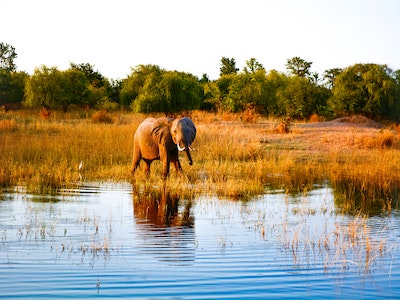
Kariba
Located in the north of Zimbabwe near the Zambian border, Kariba is the Zimbabwean centre for the tourist industry orientated around the magnificent Lake Kariba. It's a good base f…
Kariba
Located in the north of Zimbabwe near the Zambian border, Kariba is the Zimbabwean centre for the tourist industry orientated around the magnificent Lake Kariba. It's a good base from which to explore surrounding game reserves and attractions in northern Zimbabwe such as Mana Pools, which is a UNESCO World Heritage site. It's also useful as a stopover en route to Zambia. The town has a number of restaurants, casinos, quality resort hotels, and safari lodges, not to mention a number of large luxury houseboat hotels that use Kariba as a base. Lake Kariba itself is one the largest manmade lakes in the world. Such a large body of water attracts a multitude of game, so the nature reserves bordering the dam make for excellent wildlife viewing.
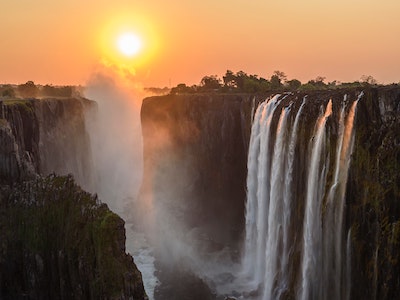
Victoria Falls
The majestic Victoria Falls, or Mosi-oa-Tunya (the Smoke that Thunders), is located on the Zambezi River, between Zambia and Zimbabwe. Explorer David Livingstone named the falls af…
Victoria Falls
The majestic Victoria Falls, or Mosi-oa-Tunya (the Smoke that Thunders), is located on the Zambezi River, between Zambia and Zimbabwe. Explorer David Livingstone named the falls after Queen Victoria when he first saw them in 1855. One of the seven natural wonders of the world, the falls have been attracting travellers and adventure-seekers for decades, the pounding waters creating a mist that can be seen for miles and the sound of the falls, especially in the rainy season (November to April), making it difficult to hear anything else. There's a trail that runs along the cliff adjacent to the waterfall that visitors can use to reach the scenic viewpoints; a helicopter tour is another phenomenal way to see the falls from above.
Website victoriafallstourism.org/
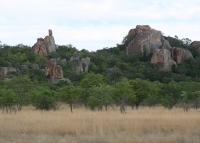
Matobo Hills
The granite formations in Matobo National Park contain rock art and San artefacts that date back thousands of years. Surrounded by huge rock formations and delicately balanced boul…
Matobo Hills
The granite formations in Matobo National Park contain rock art and San artefacts that date back thousands of years. Surrounded by huge rock formations and delicately balanced boulders, this UNESCO World Heritage Site is a scenic place to see game such as white and black rhinos, leopards, zebras, monkeys and much more. One of the strangest, but most fascinating attractions in Matobo Hills is the lizard feedings that take place three times daily at World's View, which is also where Cecil John Rhodes is buried. Although the game viewing can be spectacular, this area is mainly fascinating because of its ancient cultural remnants, making it a particularly exciting Zimbabwean attraction for those interested in rock art.
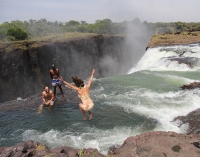
Devil's Pool
A popular but somewhat risky Vic Falls attraction is Devil's Pool, a naturally formed swimming spot right on the edge of the falls. The pool is only safe to enter between September…
Devil's Pool
A popular but somewhat risky Vic Falls attraction is Devil's Pool, a naturally formed swimming spot right on the edge of the falls. The pool is only safe to enter between September and December, when the river flow is at the right level. Even then this is quite a daring adventure and not for the faint hearted. Aside from the thrill of swimming on the edge of the falls, Devil's Pool is also a great spot for those once-in-a-lifetime holiday photos. Ferries from Livingstone Island take visitors to this exciting attraction whenever the water levels are deemed safe enough, though this activity is predominantly accessible from the Zambian side of the Falls.
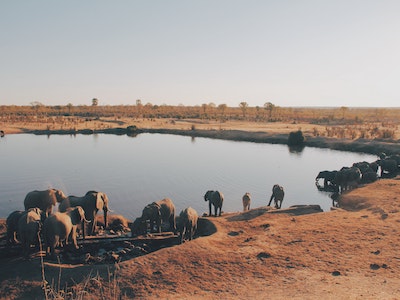
National Parks
The three primary national parks to explore while on holiday in Vic Falls are the Victoria Falls National Park, the Mosi-oa-Tunya National Park on the Zambian side of the falls and…
National Parks
The three primary national parks to explore while on holiday in Vic Falls are the Victoria Falls National Park, the Mosi-oa-Tunya National Park on the Zambian side of the falls and, about 120 miles (193km) further south, the Hwange National Park. These parks feature a vast selection of wildlife, including elephant, buffalo, giraffe, zebra and various antelope; there are also occasional sightings of lion and leopard. The Victoria Falls National Park incorporates the iconic falls (a UNESCO World Heritage Site) and is therefore an absolute must for travellers in the region. Apart from the falls, and the gorgeous rainforest beneath, the national park includes varied landscapes populated by diverse game, including the Big Five of elephant, lion, buffalo, leopard and rhino.
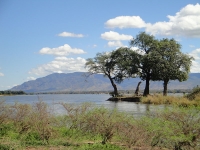
Mana Pools National Park
Mana Pools National Park incorporates a vast expanse of flat, arid land that becomes a broad expanse of glorious lakes after each rainy season, which last from November to April. A…
Mana Pools National Park
Mana Pools National Park incorporates a vast expanse of flat, arid land that becomes a broad expanse of glorious lakes after each rainy season, which last from November to April. Animals follow the pools in search of water and, as the lakes dry up, Mana Pools National Park is one of the best places in the country to view game such as elephants, hippos, crocodiles and buffalo, as they make the most of nature's bounty before it disappears. Mana means 'four' in Shona, and refers to four permanent pools in the middle Zambezi that make up the UNESCO World Heritage Site. Far from any human settlement, Mana Pools National park is a great place to experience a truly wild Zimbabwe.
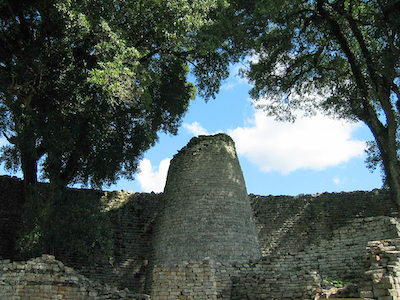
Great Zimbabwe
The capital of Zimbabwe during the Iron Age and dating back to the 11th century, Great Zimbabwe was home to the royal palace and an estimated 18,000 people in its heyday. At some p…
Great Zimbabwe
The capital of Zimbabwe during the Iron Age and dating back to the 11th century, Great Zimbabwe was home to the royal palace and an estimated 18,000 people in its heyday. At some point the city was abandoned, and it now stands empty and ruined, with its most prominent features being the mighty stone walls that reach 16 feet (5m) high, and the famous Zimbabwean Birds that were perched on top of eight monoliths around the city. A UNESCO World Heritage Site, the ruins are majestic and impressive, and form the largest ancient structure south of the Sahara Desert. Exploring the ruined city is extremely thrilling; it's a mysterious place that invites flights of the imagination and offers a palpable sense of age.


